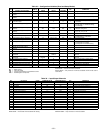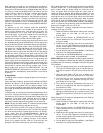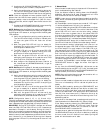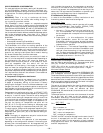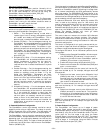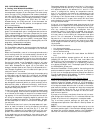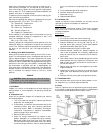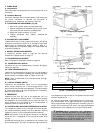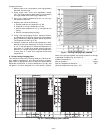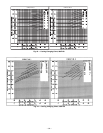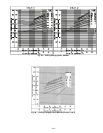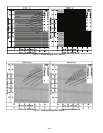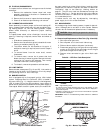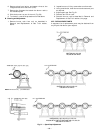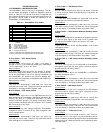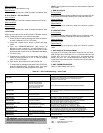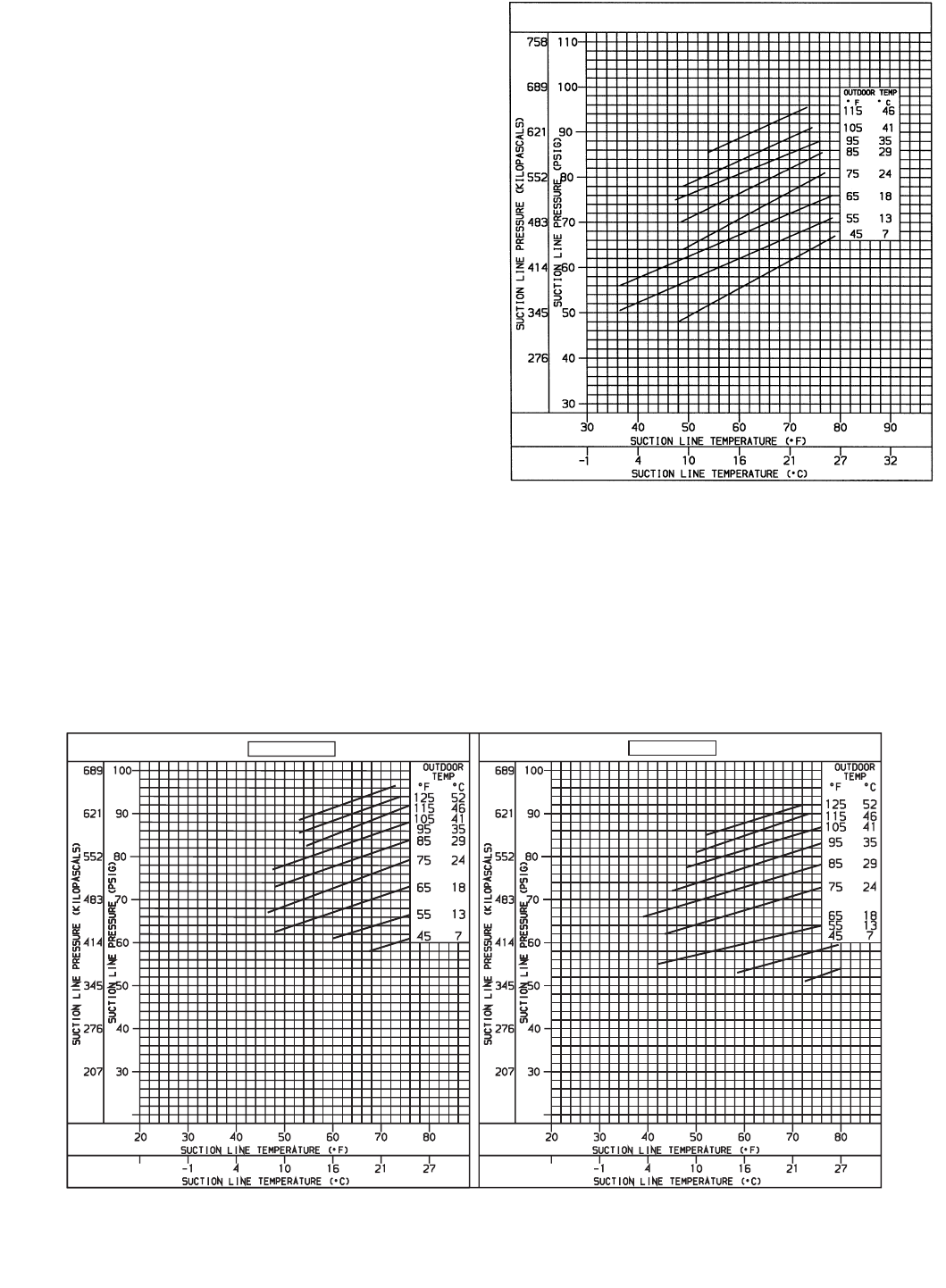
—63—
Proceed as follows:
1. Remove caps from low-pressure and high-pressure
Schrader valve fittings.
2. Using hoses with valve core depressors, attach
low- and high-pressure gage hoses to low-pressure
and high-pressure service fittings, respectively.
3. Start unit in Cooling mode and let unit run until sys-
tem pressure stabilize.
4. Measure and record the following:
a. Outdoor ambient-air temperature (F db).
b. Evaporator inlet-air temperature (F wb).
c. Suction-tube temperature (F) at low-side service
fitting.
d. Suction (low-side) pressure (psig).
5. Using “Cooling Charging Charts” compare outdoor-
air temperature (F db) with the suction line pressure
(psig) to determine desired system operating suction
line temperature. See Fig. 41-48.
6. Compare measured suction-tube temperature with
desired suction-tube temperature. Using a tolerance
of ± 3° F, add refrigerant if measured temperature is
more than 3° F higher than proper suction-tube tem-
perature, or remove refrigerant if actual temperature
is more than 3° F lower than required suction-tube
temperature.
A. To Use Cooling Charging Chart
This method is to be used in Cooling mode only. Take the out-
door ambient temperature and read the suction pressure
gage. Refer to appropriate chart to determine what suction
temperature should be. If suction temperature is high, add
refrigerant. If suction temperature is low, carefully recover
some of the charge. Recheck the suction pressure as charge
is adjusted. Example (Fig. 44, Circuit 2):
Outdoor Temperature . . . . . . . . . . . . . . . . . . . . . . . . . . . .85 F
Suction Pressure . . . . . . . . . . . . . . . . . . . . . . . . . . . . . .74 psig
Suction Temperature should be . . . . . . . . . . . . . . . . . . . .56 F
(Suction temperature may vary ± 3 F.)
Fig. 41 — Cooling Charging Chart; 580F090
CIRCUITS 1 AND 2
CIRCUIT NO. 1
CIRCUIT NO. 2
Fig. 42 — Cooling Charging Chart; 580F102



